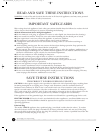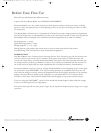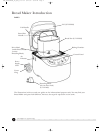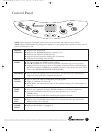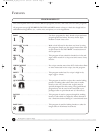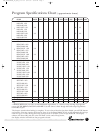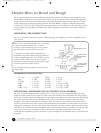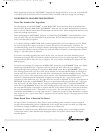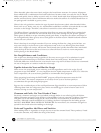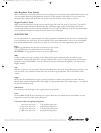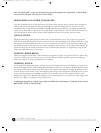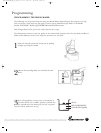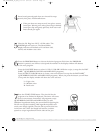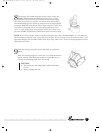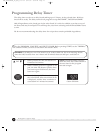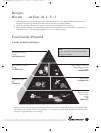
10.
When kneaded, gluten becomes elastic and gives the bread better structure. In contrast, all-purpose
flour, milled from a combination of soft and hard wheat, becomes elastic too easily for use in a Bread
Maker and quickly loses its ability to stretch well. As a result, bread made from all-purpose flour will be
smaller and more dense. Several well-known mills now market bread flour. It is labeled bread flour on
the package and is available at grocery stores.
Wheat is the only grain that contains the type of protein that becomes elastic when kneaded. Other
flours, such as rye, barley, oats, soy, rice and buckwheat add flavor and fiber to breads but do not add
structure to the dough. Therefore, wheat flour is essential as a base when making bread.
Vital Wheat Gluten is produced by processing white flour one more step. White flour contains both
protein and starch, and mills now can remove most of the starch leaving only the protein (gluten).
When gluten is added to recipes containing whole grain flours, it improves the volume and shape of
the loaf significantly. Many grocery stores stock gluten in the flour section. Health food and nutrition
centers also carry this item.
Flour is best kept in an airtight container. If you are storing the flour for a long period of time, you
may want to keep it in the freezer as the refrigerator tends to dry it out. Whole grain wheat flours,
which have a higher oil content, will become rancid much more quickly than white flour and should
always be kept in the freezer. Be sure, however, to allow all flours to return to room temperature
before placing in the Bread Maker.
Fat: Dough Enhancer and Conditioner
Our recipes were developed using vegetable oil. You may use any type of oil or substitute in equal
proportions solid shortening or real butter (divide them into small pieces). We have found no
noticeable difference in flavor but the crust may be more crisp with real butter. We do not recommend
the use of margarine as it tends to make the crust tough.
Liquids: Activate the Yeast and Bind the Dough
When we use the term liquid, we are referring to all wet ingredients used in the recipe. For all
programs except FAST BAKE
™
, it is very important that the liquid temperature is 80°F/27°C. With this
water temperature, the yeast activates gradually to accommodate these programs.
When preparing bread using the FAST BAKE
™
program, all liquid temperatures must be 110°-
115°F/43°-46°C. The warmer temperature is necessary for the yeast to activate quickly to
accommodate this specially designed program.
Eggs are also considered part of the total liquid amount. Eggs should be at room temperature. When
removing them from the refrigerator, place whole uncracked eggs in a bowl of warm water for 15
minutes to bring to room temperature.
Cinnamon and Garlic: Not True Friends of Yeast
Previously, cinnamon and sugar were sprinkled on dough before it was rolled up jelly-roll fashion.
Adding cinnamon and garlic to the dough in a Bread Maker, however, presents a problem. Cinnamon
and garlic reacts with bread dough just as a meat tenderizer reacts with meat. It breaks down the
structure. Although it smells wonderful as it is baking, the flavor is dissipated in the baking process.
DO NOT ADD MORE THAN LISTED IN THE RECIPE. For more flavor, use cinnamon and garlic as
spread for the bread rather than adding to the dough.
Fruits and Vegetables: Add Flavor and Nutrition
When adding fruits or vegetables to recipes, do not exceed the amount listed. These products, if used
in excessive amounts, may inhibit the rising of the bread.
Bread Maker Use and Care Guide
TMR_TBR20HCAN_IB_New_11-8-04 8/11/04 6:08 PM Page 10



